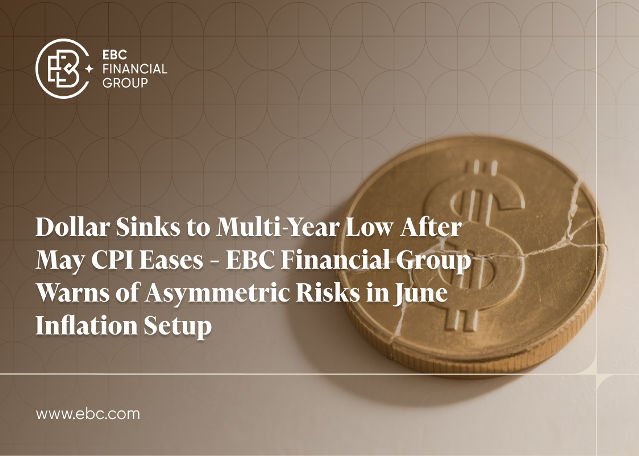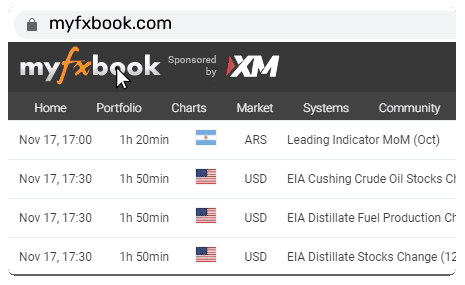EBC Debunks Soft CPI = Rate Cuts: Why the Fed Isn’t Backing Down

Markets were quick to celebrate May’s softer inflation print, but we at EBC believe the party may be premature. Traders piled into risk assets, the US dollar slid to its lowest point since April 2022, and bets on a September rate cut surged. Yet a closer look at the numbers and the broader context suggests the Federal Reserve is unlikely to change its stance any time soon.
Let’s break down what the data really says and why we think rate cut optimism could face serious challenges ahead.
Headline Relief, Core Concern
On the surface, May’s CPI report brought some welcome news. Headline inflation came in at 2.4% year-on-year, below market expectations of 2.5%, and just 0.1% on a monthly basis, thanks largely to a 2.6% drop in petrol prices. That was enough to push the US Dollar Index (DXY) down to 98.6 and lift equities to near-record highs.
But that top-line relief masks a more stubborn reality underneath. Core inflation, which strips out food and energy, stayed unchanged at 2.8%. Categories such as housing, insurance and services remained firm. Shelter costs, which make up over a third of the CPI basket, rose another 0.3% in May.
"Markets saw the 0.1% print and cheered, but the Fed's focus is deeper," said David Barrett, CEO of EBC Financial Group (UK) Ltd. "Sticky services inflation, rising shelter costs, and new tariff risks tell us we're not out of the woods yet. This is not the soft landing — it's just a temporary cloud break."
Dollar Slide Isn’t All Good News
The dollar has weakened roughly 3 to 4 percent year to date. That’s been supportive for non-USD assets, including emerging market currencies such as the Mexican peso and several Asian FX pairs. However, a weaker greenback isn’t a one-way benefit.
"A weaker dollar reduces import costs for other countries — but raises them right here at home," Barrett noted. "With tariffs on over $18 billion worth of Chinese goods taking effect in June, we expect potential spillovers into core goods inflation. Markets celebrating now may find themselves repositioning rapidly if CPI re‑accelerates."
June CPI Will Be a Pivotal Test
Markets are now looking ahead to the June CPI report, due just before the Jackson Hole Economic Symposium in August. With unemployment holding at 4.0% and average hourly earnings rising 3.9% year-on-year, the labour market remains tight, a dynamic that limits the Fed’s flexibility.
"The June data will be a credibility test," Barrett added. "If inflation flares while the dollar remains weak and tariffs kick in, the Fed may face conflicting pressures — supporting growth on one hand while holding the inflation line on the other."
Traders Need to Stay Nimble
At EBC, we are watching positioning very closely. Rate-sensitive markets have rallied hard on soft data and stretched sentiment leaves room for sharp reversals. Central bank divergence is another layer of risk. The ECB has already cut rates, and the Bank of England is expected to do the same in July. But the Fed is still on hold, and for good reason.
"This is not a time to chase rate cut narratives," Barrett concluded. "Asymmetric risks are building. Investors should stay nimble, diversify exposure across currencies and sectors, and prepare for renewed volatility. The next data print could be the pivot — or the plot twist."
Disclaimer: This material is for general information purposes only and is not intended as (and should not be considered to be) financial, investment or other advice on which reliance should be placed. No opinion given in the material constitutes a recommendation by EBC or the author that any particular investment, security, transaction or investment strategy is suitable for any specific person.





















